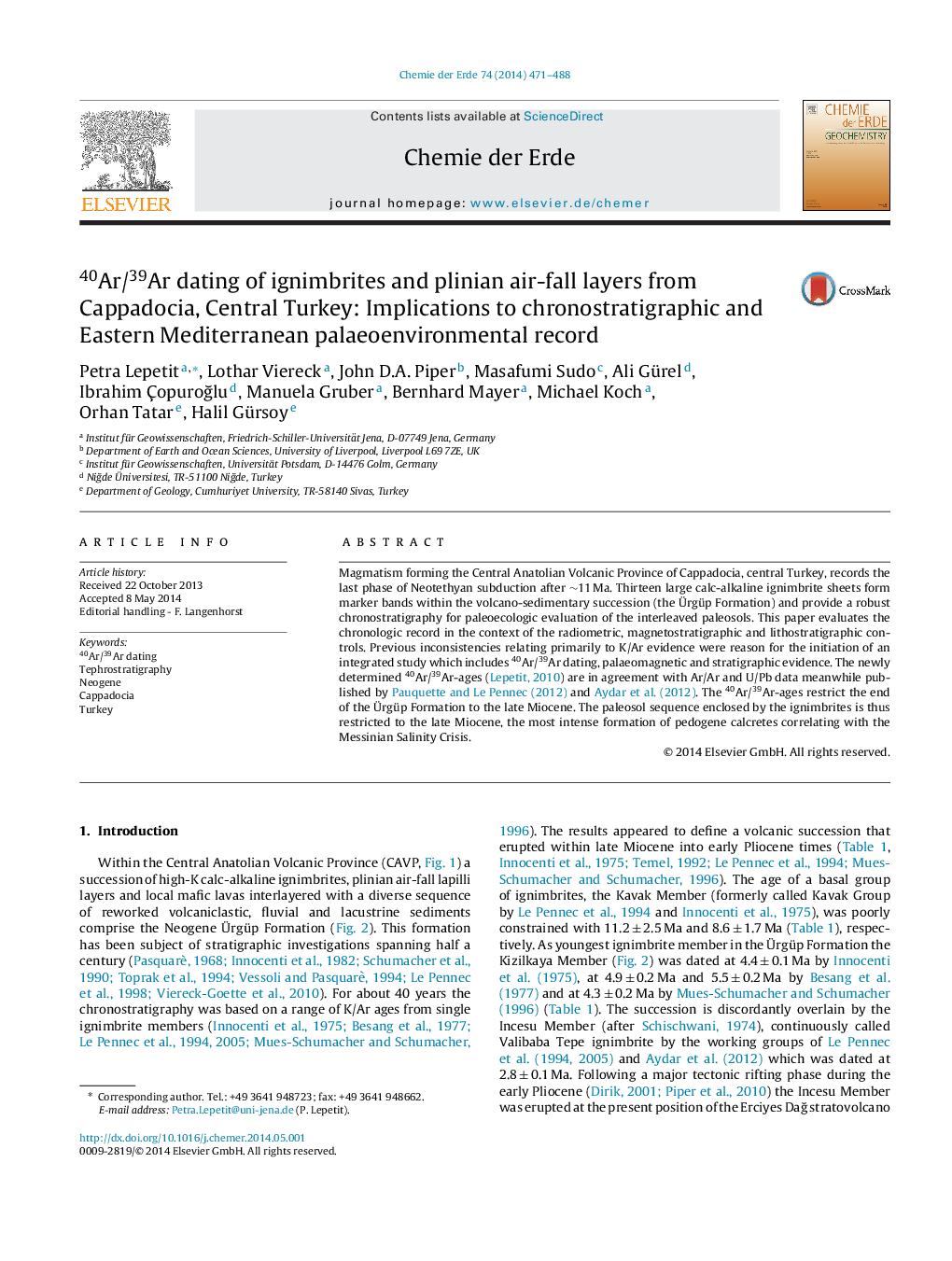| Article ID | Journal | Published Year | Pages | File Type |
|---|---|---|---|---|
| 6305853 | Chemie der Erde - Geochemistry | 2014 | 18 Pages |
Magmatism forming the Central Anatolian Volcanic Province of Cappadocia, central Turkey, records the last phase of Neotethyan subduction after â¼11Â Ma. Thirteen large calc-alkaline ignimbrite sheets form marker bands within the volcano-sedimentary succession (the Ãrgüp Formation) and provide a robust chronostratigraphy for paleoecologic evaluation of the interleaved paleosols. This paper evaluates the chronologic record in the context of the radiometric, magnetostratigraphic and lithostratigraphic controls. Previous inconsistencies relating primarily to K/Ar evidence were reason for the initiation of an integrated study which includes 40Ar/39Ar dating, palaeomagnetic and stratigraphic evidence. The newly determined 40Ar/39Ar-ages (Lepetit, 2010) are in agreement with Ar/Ar and U/Pb data meanwhile published by Pauquette and Le Pennec (2012) and Aydar et al. (2012). The 40Ar/39Ar-ages restrict the end of the Ãrgüp Formation to the late Miocene. The paleosol sequence enclosed by the ignimbrites is thus restricted to the late Miocene, the most intense formation of pedogene calcretes correlating with the Messinian Salinity Crisis.
